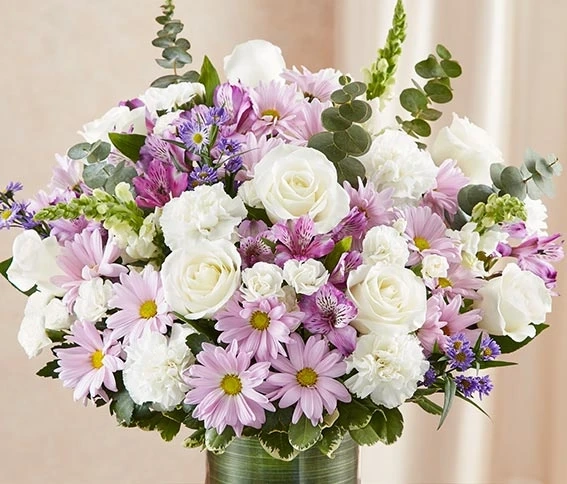List of Common Early Spring Flower Names
AnemoneAzaleaBegoniaBleeding heartCalla LilyCreeping PhloxCrocusDaffodilDahliaDaisyGardeniaHyacinthImpatiensLilacLily of the ValleyMagnoliaMountain LaurelPansyPeonyPetuniaPrimroseTulipTiger LilyRhododendronVincaWisteriaTulips
Tulips are a perennial and come back year after year showing off their green foliage which can be seen coming through the ground in early spring. These wonderful spring flowers come in a variety of bright colors. They can grow very short or there is also a long stemmed variety of Tulips. The blossoms from the Tulip are typically shaped like a deep cup with a waxy exterior coating. Tulips have very few leaves compared to other types of flowers and do not emit a noticeable fragrance as many other flowers.
Tulips need a period of dormancy in order to thrive. These spring flowers grow best on a hill or mountainous area which have longer and cooler spring seasons and combined with earlier summers to accommodate longer winters. If Tulips are grown in a warmer climate they often need to be replanted annually. These beautiful spring flowers can be propagated with seeds and offsets. Growing from an offset is botany term where a cutting from a mother plant is used to generate another plant (cloning). However, this method produces a plant with the exact same genetics as the mother plant. When growing Tulips from seed this method requires five to eight years of growth before they begin to flower. This is a considerable reason why commercial growers utilize cloning in order to produce flowering plants in as little as 1 year. However, growing Tulips from seed will often produce a healthier (more disease resistant and greater variety and newer hybrids.
Interestingly Tulips derive their name from a Persian origin which has a meaning of Turban. It is common knowledge that Holland and the Netherland area is considered to be the Tulip botany capitol. Many varieties of Tulips are grown and cultivated in this area and shipped all to various countries. Perhaps this is why Holland has been deemed the commercial Tulip flower capitol.
Tulips are another very well known flower of spring which blooms relatively early. Similar to the Daffodil, their flower bulbs are concealed underground protected throughout the winter, so Tulips are a bulbous plant as well. These spring flowers belong to the flower family species Liliaceae. It is amazing that these beautiful flowers have a native range which extends from the northern Africa area to northwestern China. Tulips are grown in multi-colored tulip gardens, displayed in pots and are often sold as cut flower bouquets.
Daffodils
Daffodils are brightly colored yellow flowers which are often seen in large groups or rows throughout the countryside. Sometimes mistakenly called an Easter lilies, the daffodil flower is from the Narcissus family of spring flowers. A more accurate name that has been given to these early spring flowers is Easter Bell, which originates from the culture in Germany. The Daffodil has a moderately long trumpet shaped center surrounded by six delicate leaves often of the same pale yellow color, but may vary due to natures wild interbreeding of this species spring flower.
Daffodils are some of the first spring flowers to protrude up from the ground in early spring. These floral shoots often are the first recognizable signs of spring flowers in late February and early March. Look low near the ground for green pointed sprouts directed straight up. This growth will often protrude through frost or snow covered ground and force their way through leaves or other ground cover. The early spring growth comes from bulbs that are several inches below the surface. Daffodil flower bulbs have been mistaken for wild onions in the past and have been the cause for poisoning, as these flowers contain a dangerous toxin. After several weeks of only seeing the green shoots from the flower bulb the daffodil blossoms will begin to form.
Creeping Phlox
Creeping phlox are another variety of early blooming spring flowers. This low ground hugging herbaceous plant is a perennial and native to the wooded areas of the Appalachian mountain range. These multi-colored flowers come in various shades of pale white, light purple or pale pink. Though the flowers are rather small they are many on each cluster and they create quite a spectacular display in lawns and gardens.
Creeping phlox are hardy flowering plants and once rooted can withstand considerable trimming throughout the growing season. They can thrive best in areas that are shady, and thus make an excellent ground cover around the base of trees. One benefit of these vigorous growing flowers is the more they are cut back, the more they spread and grow. Creeping phlox often are seen hanging from rock walls and spread around the base of larger shrubs in order to help control weeds and other undesirables from growing near flower gardens.
There are several dozen types of spring flowers which are loved and cherished by flower horticulturalists around the world. The spring flower season is a wonderful time of the year which brings a refreshing and welcome display of beautiful colored flowers after a long winter. So certainly it is worth the effort to take the time this spring to enjoy all the colorful spring flowers and various scents in your area. If you simply set aside a few minutes each day to relax and view the beautiful flowers around us all during the spring season, the inherited benefits of natures new life spring brings with it will rejuvenate your heart and mind as well.


